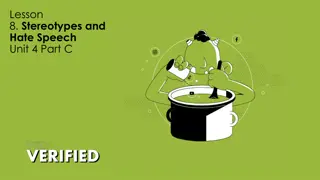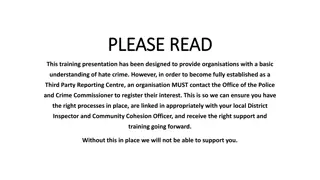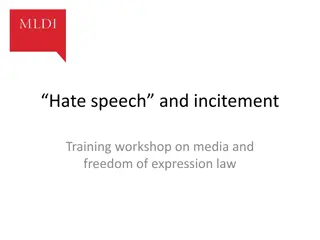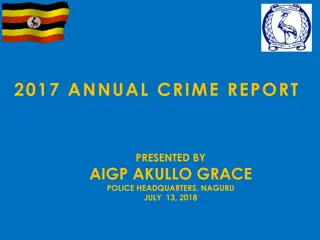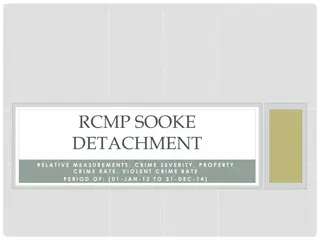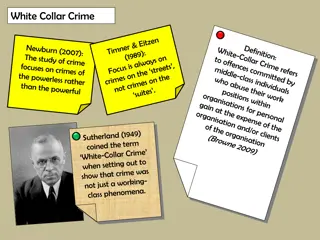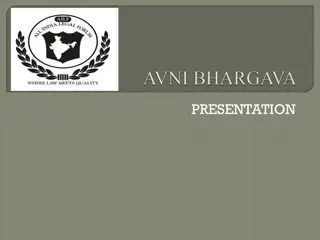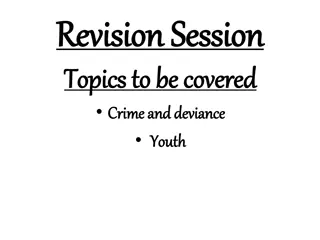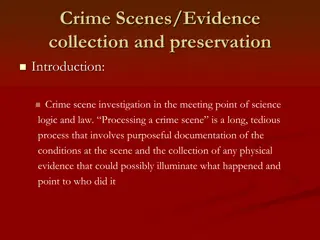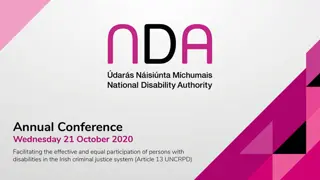Understanding Hate Crime and Its Impact: Real Stories and Information
Hate crime is a serious issue that affects individuals on various grounds such as race, faith, sexual orientation, disability, and gender identity. Real-life stories like Fiona and Frankie's tragic experience and Tommy's brutal attack shed light on the devastating impact of hate crimes. Knowing what hate crimes entail, how they manifest, and the distinction between online and offline hate is crucial in combating this harmful behavior.
Download Presentation

Please find below an Image/Link to download the presentation.
The content on the website is provided AS IS for your information and personal use only. It may not be sold, licensed, or shared on other websites without obtaining consent from the author. Download presentation by click this link. If you encounter any issues during the download, it is possible that the publisher has removed the file from their server.
E N D
Presentation Transcript
Lab.3 Industrial Pharmacy II Tablet dosage form Presented by Assistant Lecturer: Aula Jawad
Introduction Tablets are solid dosage forms usually prepared with the aid of suitable pharmaceutical excipients. They may vary in Size, shape, weight, hardness, thickness, disintegration, and dissolution characteristics Tablets are classified according to The Route of administration of tablets: The most common one is (????) And in other aspects; depending upon their intended use and method of manufacturing
Advantages Patient acceptability due to: ( Portability, Hard to tamper with tablets, Easy to swallow, especially if coated.) Relatively easy to manufacture ( cheap) and package Provide accurate dosing ( Unit dosage form) Increased stability of the drug when compared to liquid dosage forms. Product identification is easy especially with use of imprints. Can be coated or designed for delayed release.
disadvantages Formulation difficulties, if the drug resists compression (amorphous nature, low-density). Some drugs have poor wetting or poor water solubility or poor dissolution which might affect the drug s bioavailability. Q/Suggest an alternative dosage form?? Bitter taste drugs or drugs sensitive to oxygen or moisture might require encapsulation or coating. Not suitable for liquid drugs.
Ideal properties of tablets Elegant products have their own identity while free of defects such as chips, cracks, and discoloration. Should withstand the rigors mechanical shocks encountered in its production, packaging, shipping, and dispensing. Should be physically stable during their designed shelf life. Must be able to release the medicinal agent(s) in the body in a predictable and reproducible manner. Have a suitable chemical stability over time that do not allow alteration of the medicinal agent(s).
Tablet Excipients Fillers or diluents (bulking agent) To make a reasonably sized tablet Improve cohesion, permit direct compression, promote flow. It is essential that fillers be inert and stable. A - Soluble : lactose , sucrose , mannitol , sorbitol . B- Insoluble: calcium sulfate, dibasic calcium phosphate (low moisture), tricalcium phosphate, starch, calcium carbonate. Filler must be: Having good flowability and compressibility. Inert, cheap, tasteless, able to disintegrate
Binders (adhesives): To promote adhesion of particles of formulation and enable granulation also maintenance of integrity of the final tablet Binders may be added as: Dry powder in dry granulation Solution in wet granulation They are either sugars or polymeric materials Examples Water Ethanol -Acacia mucilage (10-20%) - Gelatin solutions -Starch mucilage (5-10 %) PVP(3-15%) Cellulose derivative (5-10 %). (2-10%)
Lubricants, glidants, and antiadherents: they prevent the most common problem during tableting. (the flow of granulation, the adhesion of the material to the punches and dies, and the release of the tablet from the press.) Lubricants: These are those agents that the friction between the tablet edge and die wall during the ejection cycle. e.g. magnesium stearate Lubricants are usually added at the very last step before compression Glidants : Reducing friction between the particles To improve the flow properties of the granulations (spherical) e.g. talc, Silica derivatives Anti adherents: Function to prevent tablet granulation from sticking to the faces of the punches and the die walls e.g. talc, and starch.
Disintegrants : To promote the breakup of the tablets into small particles To promote rapid release of the drug and thus rapid availability Method of adding disintegrant : It is better to add it in two portions, one half is added to the powdered components before the wet granulation process and the remaining portion is added to the finished granulation just prior to the compression. This method holds that a disintegrant is required between the granules as well as within them - Starch (5-20% w/w ) , Avicel (5-20 % w/w) , Alginic acid (5-10 %w/w) ,Bentonite ( 5-15 % w/w) Preservatives Flavouring agents Film formers Opacifiers and colours
Manufacturing method Dry methods direct compression dry granulation Wet methods wet granulation Regardless whether tablets are made by direct compression or granulation, the first step, milling and mixing, is the same; subsequent step differ.
Direct Compression Direct Compression All the materials are blended together and sieved then compressed directly. Properties of directly compressed materials The API itself is compressible and/or it can be mixed with a filler that is compressible (e.g. lactose). API should have good flow properties It involves only two unit operations: 1. Powder mixing 2. Tabletting.
The advantages of the direct compression method Low cost , time- consuming Elimination of heat and moisture, thus increasing not only the stability but also the suitability of the process for thermolabile and moisture sensitive API s. fewer processing steps
Limitations of direct compression There are only few crystalline substances that may compressed directly. Most materials have low intermolecular attraction forces (cohesion) which minimize compression. The process is carried out in dry conditions, static charges may exist and result in mixing problems (flowability) Differences in particle size lead to segregation. For small doses drugs, it is not practical to achieve a uniform blend from the API and the coarser diluent. Therefore, granulation is most suitable.
Single Punch Tablet Machines Single Punch Tablet Machines Consists of hopper which delivers the powder blend into the die The die which gives the size and shape of the tablet The upper punch and lower punch are moving to fill the die and eject the tablet
Tablet compression machine Hopper for holding and feeding granulation (or powder) to be compressed Feed frame for distributing granulation from the hopper into the dies Dies for controlling the size and shape of the tablet Cam tracks for guiding the movement of the punches Punches for compressing the granulation within the dies
Compression process Filling By gravitational flow of powder from hopper via the die table into die. The die is closed at its lower end by the lower punch. Compression The upper punch descends and enters the die and the powder is compressed until a tablet is formed. During the compression phase, the lower punch can be stationary or can move upwards in the die. After maximum applied force is reached, the upper punch leaves the powder i.e. the decompressed phase. Ejection During this phase, the lower punch rises until its tip reaches the level of the top of the die. The tablet is subsequently removed from the die and die table by a pushing device.
procedure Metronidazole 200 mg 2.4 g MCC 345mg 4.14 g Mg. Stearate 1% Prep. 12 tablets 1.Weigh the required amount of metronidazole, and MCC to prepare 12 tablets and mix them geometrically. Avoid grinding (why??). 2.Pass through 30 mesh size sieve. (Why?) 3.Add the required amount of lubricant and mix for not more than 5 minutes. (Mixing time is critical and should not exceed 5 min. (explain). 4.Compress directly with a tableting machine.
Homeworks 1. Types of lactose? Disadvantages? 2. Advantage of dibasic calcium phosphate as diluent? 3. Lubricants are usually added at the very last step before compression why? 4. Low-dose drugs are not suitable to be manufactured by direct compression. 5. Add the required amount of lubricant and mix for not more than 5 minutes. (explain).


![Prevention and Combating of Hate Crimes and Hate Speech Bill [B.9B.2018]](/thumb/60513/prevention-and-combating-of-hate-crimes-and-hate-speech-bill-b-9b-2018.jpg)



